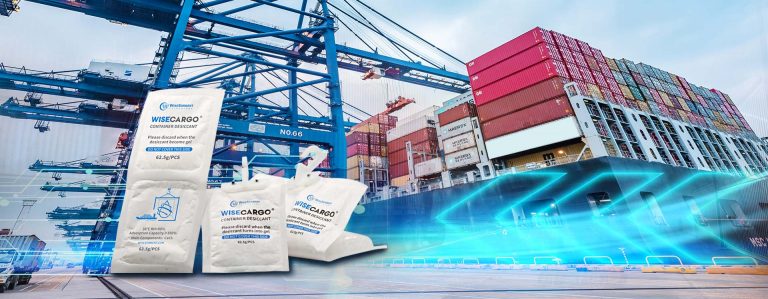
Container transportation is the most common method of transportation for global trading. In the process of sea transportation, containers often experience high humidity climate and large diurnal temperature changes. During the day, when the temperature is higher, some of the moisture-containing materials (cartons, pallets, etc.) in the container evaporates into the air. Moreover, some of the highly humid air will also enter the container through the air vents. As a result of temperature drops at night, the moisture inside the container supersaturates (relative humidity reaches 100%), the vapor condenses into water beads, which is commonly known as “container rain”. Currently, container desiccants are commonly used to prevent “container rain”.
Due to the high humidity at sea and the long shipping time, ships will encounter a variety of weather in the process of transportation, and the degree of moisture damage varies greatly. what type and amount of desiccant to use which will effectively reduce the moisture content in the container is the problem that a lot of marine customers need to resolve.

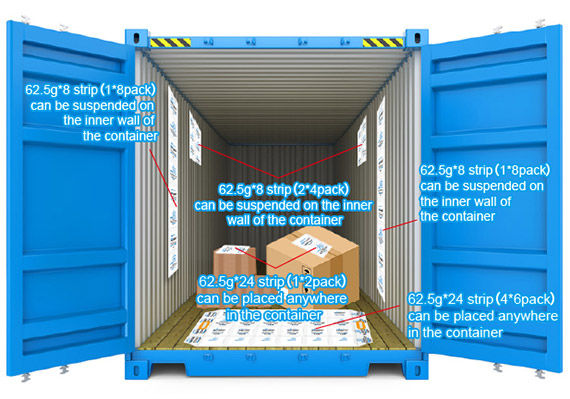
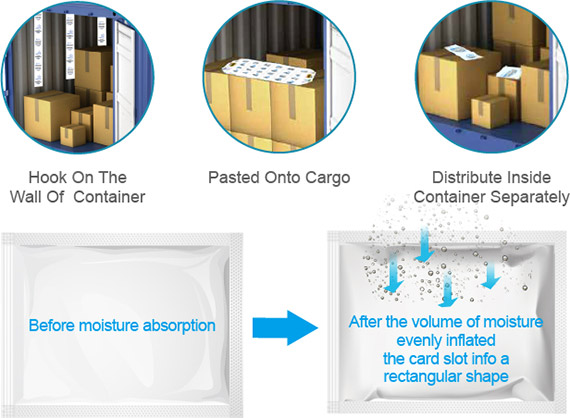
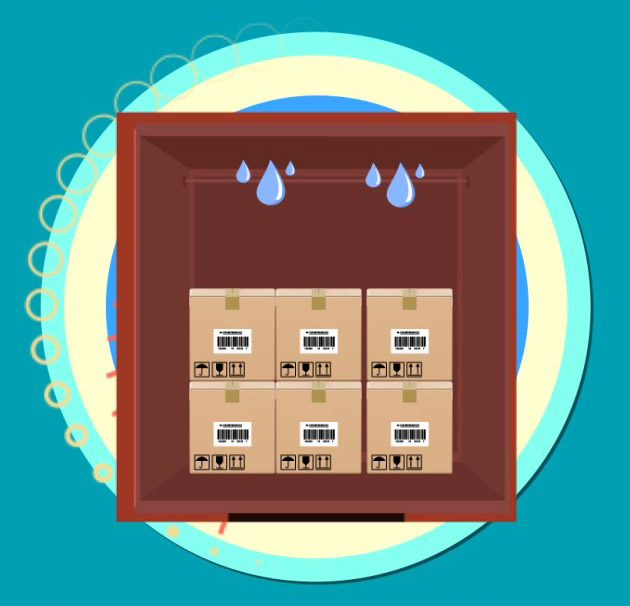
Our customers had the same problem. This customer transports plastic products from China to the United States by container shipping. During transportation, the cartons were wet due to water vapor. The customer expects the desiccant to protect the goods and avoid the condensed water. The containers are 40’ containers, and the goods are sealed with PE bags, put in cartons and loaded in pallets. Each pallet is loaded with 40 cartons, a container has a total of 44 pallets. Each carton weighs 1.1lbs and each pallet weighs 44lbs. The transit time is 40 days. Transportation environment: minimum temperature and humidity is 25℃, RH90%, and the maximum temperature and humidity is 40℃, RH90%. The customer came to WiseSorbent® R&D center to find out how many desiccants shall be used in the transportation process.
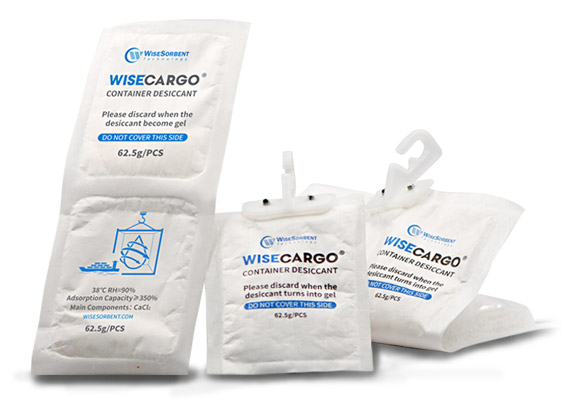
Through calculation, the required amount of high-absorption desiccant is 7455g. We recommend using 15 strips of 125g*4 high-absorption desiccant, which can control the relative humidity in the container within RH90% to avoid vapor condensation caused by the oversaturation of water vapor in the air.
The accuracy of theory needs to be proved by practice. We set up a transportation environment according to the customer’s demand and hung 15 strips of 125g*4 high desiccant packages on the side hook of the container. After the container is packed, fix the temperature and humidity recorder above the cargo and record the temperature and humidity changes in the container during the entire transportation process. After 40 days, observe whether there are wet marks on the cartons in the container.
As can be seen from the figure above, during container transportation, the relative humidity in the container is lower than 90%, which reaches the expected target. No condensate water is generated in the container during the entire transportation process.

According to the solution WiseSorbent® R&D center provided, the customer utilized the high absorption desiccant. During the 40-day transportation process, the relative humidity in the container was lower than 90%. After the cargo arrived at the destination, cartons in the container have no wet marks. The customer was very satisfied, the customer highly appraised us, and established a long-term cooperative partnership with us.